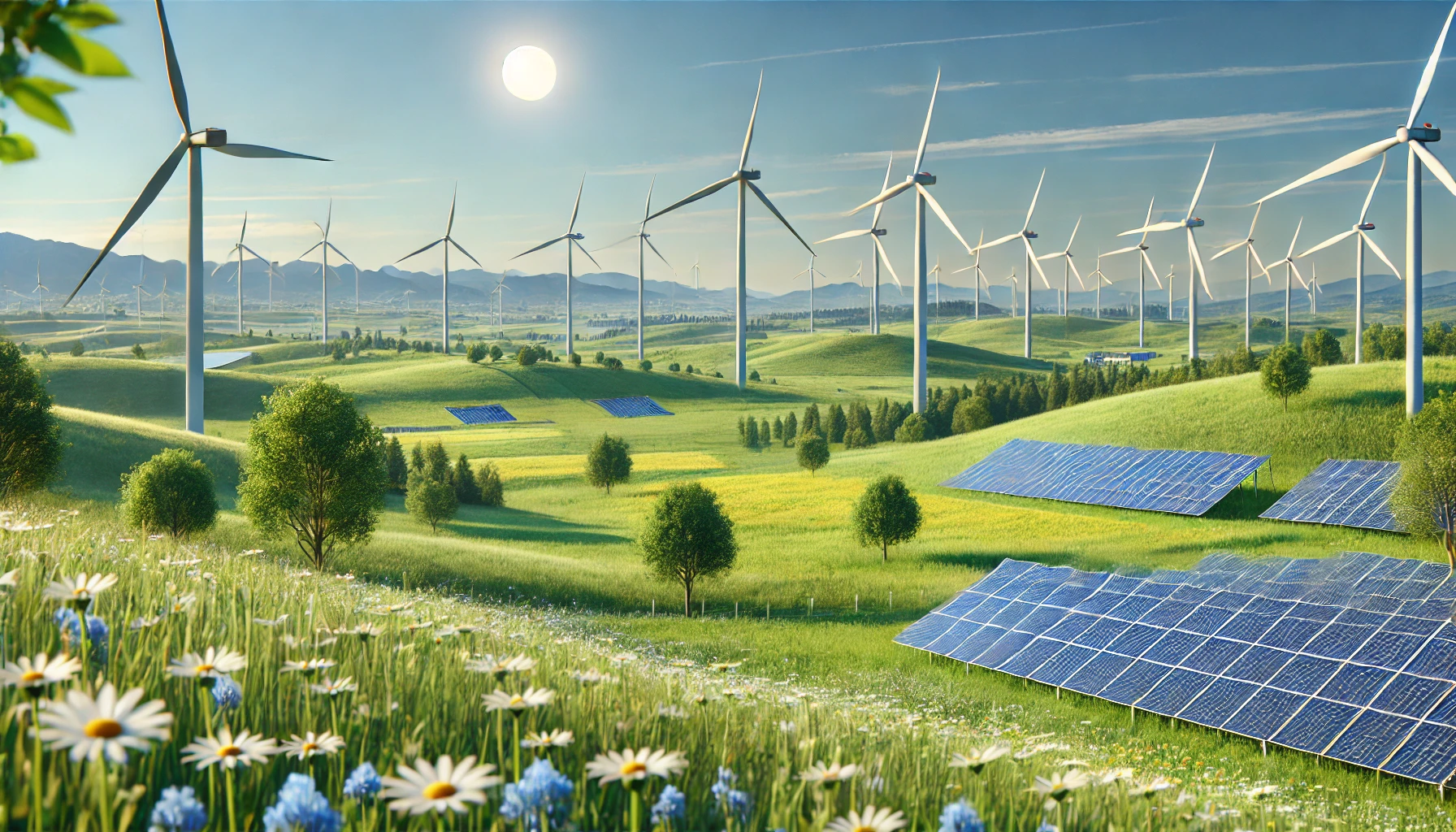
In 2023, the European Commission released its latest climate action progress report, marking significant strides in the European Union’s (EU) efforts to mitigate climate change. Greenhouse gas emissions in the EU fell by 8.3% compared to the previous year, bringing total emissions down to 37% below 1990 levels. Despite this reduction, the EU economy has continued to grow, with GDP up by an impressive 68% since 1990, underscoring the potential for economic growth while achieving substantial emissions reductions.
The EU remains committed to its ambitious target of reducing emissions by at least 55% by 2030. By leveraging renewable energy sources, expanding natural carbon sinks, and refining emissions regulations, the EU is actively working toward a sustainable future. Here, we break down the key findings and milestones from the European Commission’s report, shedding light on the successes, challenges, and ongoing initiatives driving EU climate policy.
Key Findings from the 2023 EU Climate Report
The European Commission’s report highlights multiple achievements in emissions reduction across various sectors, underscoring the role of renewable energy, emissions trading, and environmental policies. Some of the report’s notable findings include:
1. Record Emissions Reduction in Power and Industrial Sectors
Under the EU Emissions Trading System (ETS), power and industrial installations achieved a record 16.5% reduction in emissions. This substantial decrease demonstrates the ETS’s effectiveness in curbing emissions from some of the EU’s largest sources, proving that market-based approaches to emissions regulation can yield impactful results. As the cornerstone of EU climate policy, the ETS plays a vital role in encouraging companies to adopt cleaner, more efficient practices.
2. A 24% Decrease in Electricity and Heating Emissions
Emissions from the electricity and heating sectors dropped by 24%, driven by the accelerated adoption of renewable energy. Wind and solar power expansions were particularly influential, reducing dependency on fossil fuels and setting a promising precedent for further clean energy investment. With the EU targeting a 55% emissions reduction by 2030, these sectors will continue to be instrumental in achieving climate goals.
3. €43.6 Billion Raised from ETS for Climate Investments
Revenue from the ETS amounted to €43.6 billion, allocated primarily for climate action investments across the EU. These funds support renewable energy projects, sustainable infrastructure, and other green initiatives crucial for the EU’s transition toward a low-carbon economy. By reinvesting ETS revenues, the EU is establishing a cycle of sustainability, where emissions reduction efforts directly fuel climate resilience and economic growth.
4. Moderate Progress in Buildings, Agriculture, and Transportation
Emissions from sectors including buildings, agriculture, domestic transport, small industries, and waste saw a modest decline of just 2%. Despite contributing a relatively small share of emissions reductions, these sectors remain vital to the EU’s overall climate strategy. New policies under the European Green Deal aim to accelerate emissions reductions across these areas, emphasizing energy-efficient building designs, sustainable agricultural practices, and the adoption of low-emission vehicles.
5. 8.5% Rise in Natural Carbon Absorption
The land use and forestry sector, essential for natural carbon absorption, witnessed an 8.5% increase, reversing recent declines. This improvement underlines the importance of restoring and preserving natural carbon sinks, such as forests, wetlands, and grasslands, as part of the EU’s broader environmental agenda. Increasing carbon absorption capacity will help offset emissions from hard-to-decarbonize sectors, aligning with the EU’s net-zero target for 2050.
6. Aviation Emissions Increase by 9.5%
While most sectors achieved reductions, aviation saw a 9.5% increase in emissions, primarily due to the post-COVID resurgence in travel. Although aviation remains a relatively small contributor to overall EU emissions, it presents a unique challenge due to the sector’s high carbon intensity and limited alternatives to fossil fuels. The EU continues to explore low-emission aviation fuels and improve efficiency standards to curb emissions in this sector.
The Impact of Extreme Weather on EU Climate Action
In 2023, Europe experienced numerous extreme weather events, underscoring the urgency of climate action. Floods, wildfires, and heatwaves caused significant economic and social disruption, impacting millions of EU citizens. These events serve as a stark reminder of the tangible effects of climate change, motivating accelerated efforts to bolster climate resilience across the region.
The European Green Deal, which integrates climate, energy, transport, and taxation policies, remains the EU’s primary framework for achieving emissions reductions and preparing for future climate impacts. With initiatives like the Just Transition Mechanism, the EU aims to provide financial support and resources to communities most affected by the transition to a low-carbon economy, ensuring that climate action benefits all sectors of society.
Beyond 2030: The EU’s Path to Net-Zero by 2050
While the EU is on track to meet its 2030 emissions target, the European Green Deal envisions a long-term goal of net-zero emissions by 2050. This ambitious target will require sustained policy innovation, technological advancement, and societal engagement. Key strategies for achieving net-zero include:
- Advancing Renewable Energy Sources: Expanding wind, solar, and other renewable energy sources will be essential to decarbonizing the EU’s energy grid.
- Enhancing Energy Efficiency: Investment in energy-efficient infrastructure, particularly in buildings and transportation, can reduce overall energy consumption.
- Scaling Up Carbon Capture and Storage (CCS): Developing CCS technologies and increasing natural carbon absorption will be crucial to offsetting emissions from sectors that are challenging to decarbonize.
- Promoting Circular Economy Practices: Transitioning to a circular economy model that minimizes waste and recycles resources can reduce emissions across multiple sectors.
- Fostering Green Innovation: Continued investment in research and development for clean technology and sustainable practices will drive progress toward the 2050 target.
The Role of the New Commission Mandate in EU Climate Policy
With a new Commission mandate in place, climate action remains a top priority for EU leadership. Building on the successes of the European Green Deal, the EU aims to strengthen and expand climate policies that drive emissions reductions and promote sustainable economic growth. The new mandate also emphasizes the importance of international collaboration, recognizing that climate change is a global challenge requiring a unified response.
The EU’s 2023 climate progress report demonstrates that emissions reduction can go hand in hand with economic prosperity. By setting an example for sustainable growth and climate resilience, the EU continues to lead global efforts to combat climate change, inspiring other nations to pursue ambitious environmental goals.
Conclusion
The European Union’s climate action in 2023 has shown that meaningful progress is possible with a comprehensive, multifaceted approach. The EU’s achievements in reducing greenhouse gas emissions, increasing renewable energy usage, and investing in climate resilience mark a significant step toward a sustainable future. However, the journey to net-zero by 2050 will require ongoing commitment, innovation, and collaboration among policymakers, industries, and communities. As the EU works to meet its 2030 target and beyond, its strategies and progress offer valuable insights for nations worldwide grappling with the urgent need for climate action.
The EU’s 2023 climate report stands as a testament to the power of coordinated policy, technological advancement, and public engagement in building a sustainable world. By continuing to balance economic growth with environmental stewardship, the EU is well-positioned to meet its climate goals and set a global standard for responsible governance and sustainable development.



